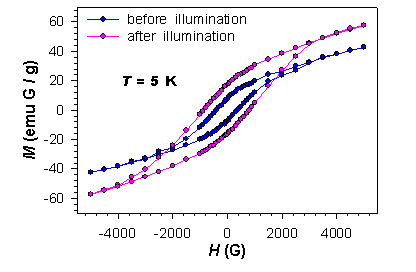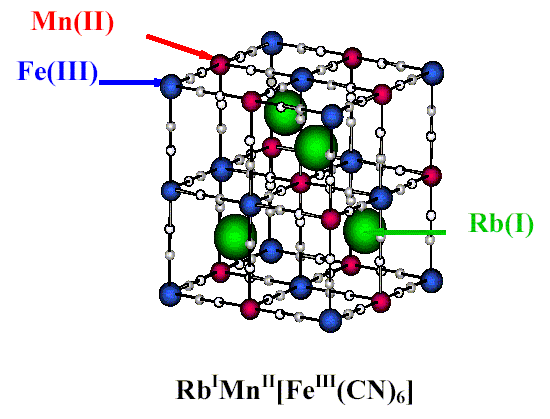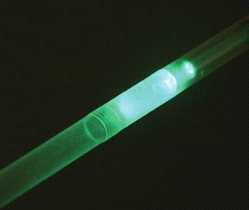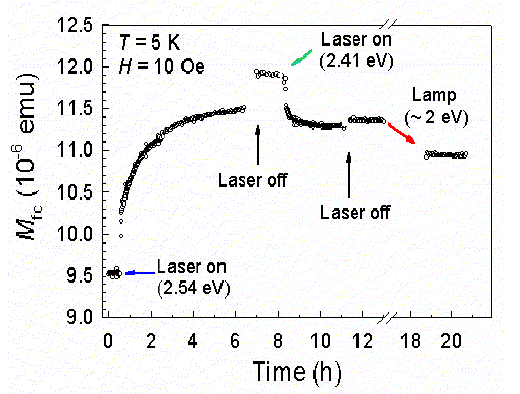
Photoinduced Magnetism
Background
The control of magnetic properties using optical stimulus has emerged as an area of research that has attracted considerable attention in recent research. This is partly due to itís significant technological potential such as magneto-optic devices as well as novel phenomena itself. A new impetus to this field has been given by discoveries of materials in which photoinduced magnetic phenomena coexist with cooperative magnetic behavior and/or magnetic order. These novel materials include Prussian blue analogs, diluted magnetic semiconductors, doped manganites, and spin ferrite films.

Fig.1: Magnetic hysteresis of Co-Fe Prussian blue in the ground state and the photoexcited state at T = 5 K.

Fig.2: Typical structure of Prussian blue magnet composed of two interpenetrating sublattice of metals with cynie bridges. Above picture shows Rubidium Manganese Hexacyanoferrate which exhibits photoinduced demagnetization.
Recent Advances
Recently, our group has developed the world's first light-tunable organic magnet ( Mn(TCNE) ), through a 25-year collaboration with Joel S. Miller group at the University of Utah. The plastic magnet is made from a polymer comprised of tetracyanoethylene (TCNE) combined with manganese (Mn) ions -- atoms of the metal manganese with electrons removed. This material exhibits a paramagnet-ferrimagnet transition at Tc = 75 K. Upon excitation with blue light the magnetic susceptibility is substantially increased in the entire temperature region below Tc . The photoinduced state has a long life time ( > 106 sec). Effects of illumination can be erased partially by different wavelength of light as well as be erased totally by annealing up to room temperature. The photoinduced magnetism is explained as a result of the formation of a metastable state, stabilized by a lattice distortion, in which exchange interaction is locally enhanced. Currently, together with our collaborator from Joel S. Miller group at the University of Utah and Kazuhito Hashimoto group at the University of Tokyo we are investigating various novel phenomena of light-induced magnetic effects in molecular based magnet. Our ongoing ambitious project is achieving high-temperature light tunable magnet in family of tetracyanoethylene (TCNE) based magnet.

Fig.3: Illumination on a sample which is prepared in a quartz tube.

Fig. 4 Effects of illumination on the field-cooled dc-magnetization of Mn(TCNE)x. y(CH2Cl2). The color of arrow indicate wavelength of Vis-light.
Return to the main page
Webpage created 20 February 2003 by John Rohrbacher
Contact the webmaster